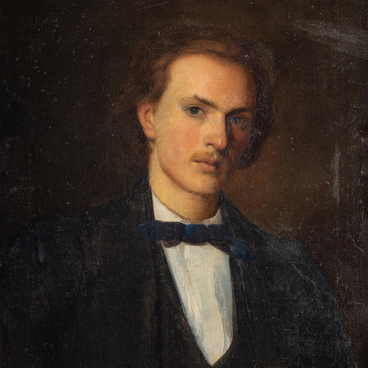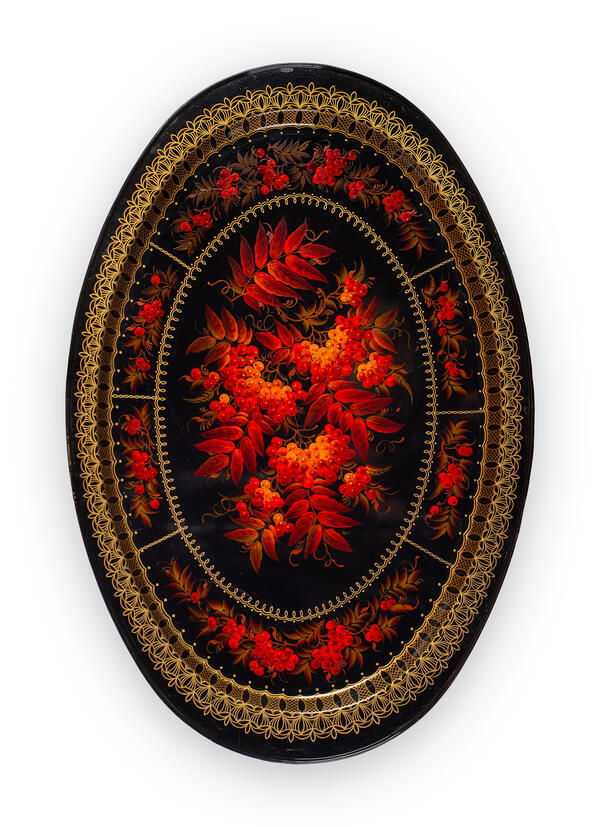Tamara Vladimirovna Yudina was born and raised in Nizhny Tagil. In the 1960s, when she was a very young girl, she began studying the art of traditional Ural painting. She joined the creative group at the tray painting workshop of the Emalposuda (Enamelware) factory. There, she discovered the impressive decorative potential of a two-color brushstroke with the use of white paint. Tamara Yudina began to design new floral motifs, including daisies, bluebells, poppies, bluets, and clovers into her compositions. She sought to enrich the traditional rose bouquets by incorporating Ural herbs and flowers.
Tamara Yudina found inspiration for new compositions in her own garden. There, she experimented with using different shades of paint on metal and came up with new stylized designs of flower buds, achieving the desired result.
In the 1990s, Tamara Yudina experienced a surge of creativity. She became interested in designing and cutting stencils. As a result, she created unique compositions enriched by golden stencil patterns. These openwork decorations harmoniously complemented the quick single-layer painting technique. The artist designed many trays featuring bouquets reminiscent of fields filled with flowers in full bloom.
The “Bouquet” tray was painted in 1994. It embodies the distinctive features of the renowned “Yudina” style — a balanced composition, rich colors, and three-dimensionality of flowers and leaves. The tray has an octagonal shape and a pierced rim. Such a design is reminiscent of riveted trays that were produced in Nizhny Tagil in the late 18th and early 19th century.
The artist complemented the openwork pierced rim with a wide golden border of stenciled floral pattern, which is also octagonal. Together, they create an exquisite frame for the lush floral bouquet. The bouquet is made up of roses and meadow flowers, including poppies, daisies, and forget-me-nots.
Tamara Yudina’s work was praised by the jury of the Khudoyarov Competition in 1999. She received the Grand Prix and the title of the Master of the Year in Decorative and Applied Arts. Her work has become part of the cultural heritage of not only the Ural region but also the entire Russian Federation.



